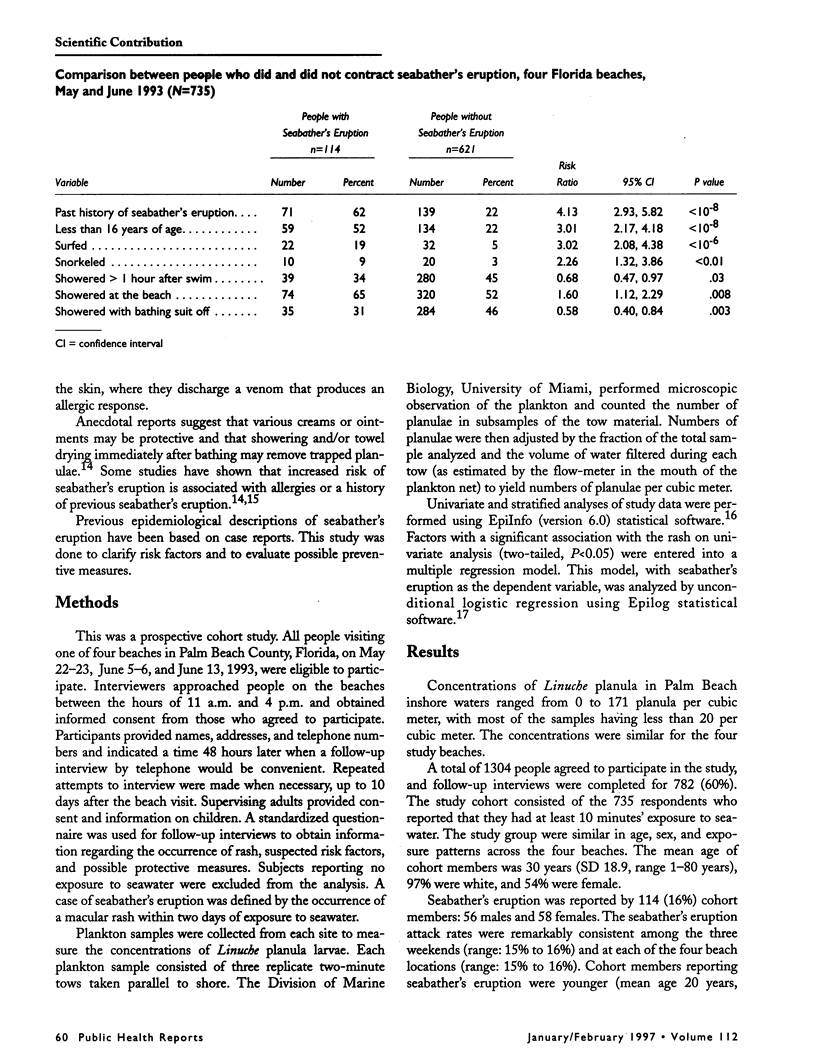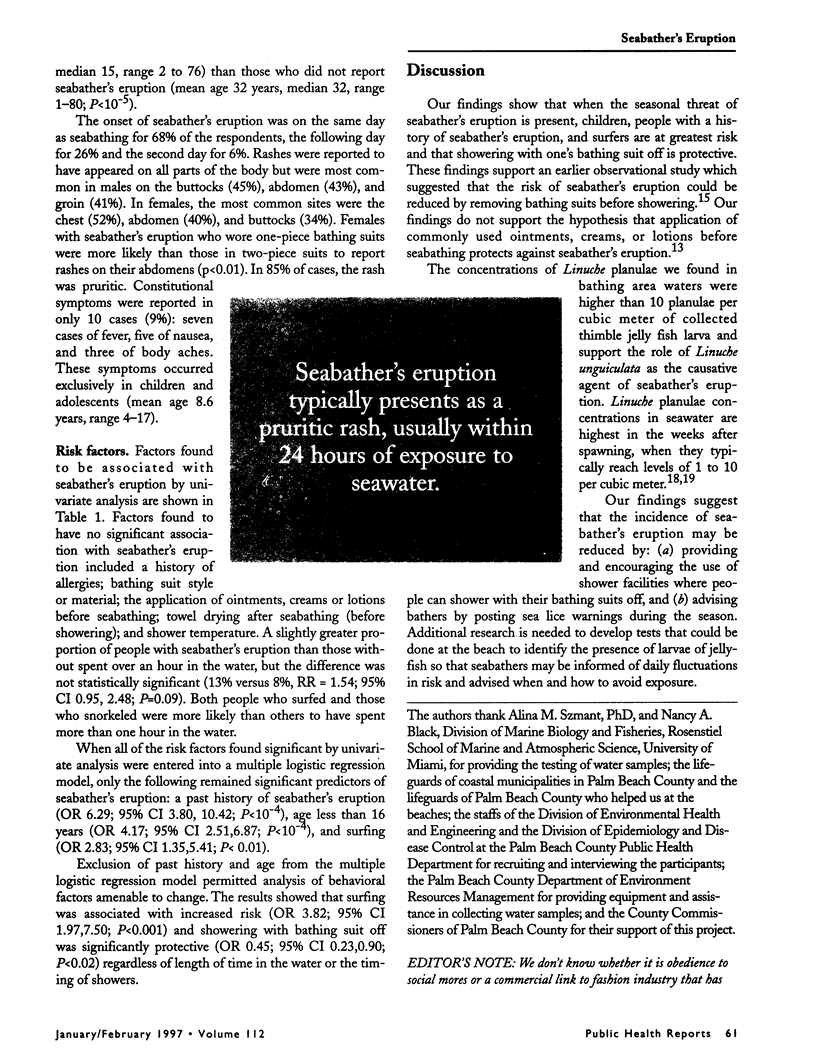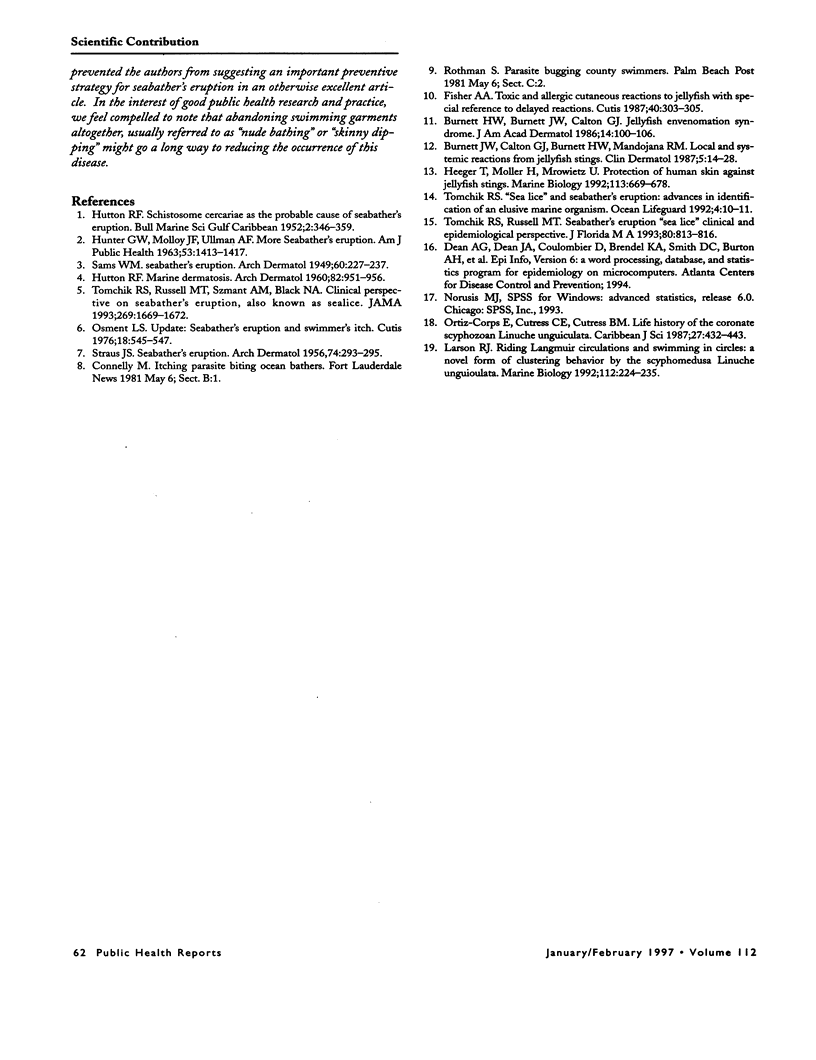Abstract
OBJECTIVE: A prospective cohort study was performed to identify risk factors for seabather's eruption. METHODS: Study participants were recruited at four beaches in Palm Beach County, Florida, during three weekends of May and June 1993. Participants were interviewed by telephone after 48 hours regarding medical history, beach activities, development of rashes, and use of possible preventive measures. RESULTS: Seabather's eruption, defined by the occurrence of a rash within two days of exposure to seawater, was reported by 114 (16%) of 735 respondents. The strongest predictor of seabather's eruption was a past history of the condition. Children less than 16 years of age were also at increased risk, as were surfers. Showering with one's bathing suit off was a useful protective measure. CONCLUSION: The study's findings suggest that when the seasonal risk of seabather's eruption is present, children, people with a history of seabather's eruption, and surfers are at greatest risk. During the sea lice season, seabathers can minimize their risk by showering with their bathing suits off after seabathing. Length of the time spent in water was not significantly associated with seabather's eruption.
Full text
PDF



Selected References
These references are in PubMed. This may not be the complete list of references from this article.
- Burnett J. W., Calton G. J., Burnett H. W. Jellyfish envenomation syndromes. J Am Acad Dermatol. 1986 Jan;14(1):100–106. doi: 10.1016/s0190-9622(86)70013-3. [DOI] [PubMed] [Google Scholar]
- Burnett J. W., Calton G. J., Burnett H. W., Mandojana R. M. Local and systemic reactions from jellyfish stings. Clin Dermatol. 1987 Jul-Sep;5(3):14–28. doi: 10.1016/s0738-081x(87)80004-4. [DOI] [PubMed] [Google Scholar]
- Fisher A. A. Toxic and allergic cutaneous reactions to jellyfish with special reference to delayed reactions. Cutis. 1987 Oct;40(4):303–305. [PubMed] [Google Scholar]
- HUNTER G. W., 3rd, MOLLOY J. F., ULLMAN A. F. MORE SEABATHER'S ERUPTION. Am J Public Health Nations Health. 1963 Sep;53:1413–1417. doi: 10.2105/ajph.53.9.1413. [DOI] [PMC free article] [PubMed] [Google Scholar]
- HUTTON R. F. Marine dermatosis. Notes on "seabather's eruption" with Creseis acicula Rang (Mollusca: Pteropoda) as the cause of a particular type of sea sting along the west coast of Florida. Arch Dermatol. 1960 Dec;82:951–956. doi: 10.1001/archderm.1960.01580060107017. [DOI] [PubMed] [Google Scholar]
- Osment L. S. Update: seabather's eruption and swimmer's itch. Cutis. 1976 Oct;18(4):545–547. [PubMed] [Google Scholar]
- Tomchik R. S., Russell M. T., Szmant A. M., Black N. A. Clinical perspectives on seabather's eruption, also known as 'sea lice'. JAMA. 1993 Apr 7;269(13):1669–1672. [PubMed] [Google Scholar]


